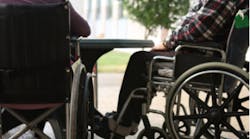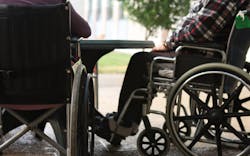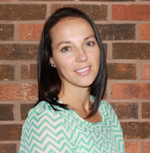Alternative practice settings: Providing exams in a nursing home
Editor’s note: Amy Ericks, RDH, BSDH, is in the process of pursuing a career in collaborative practice outside the dental practice. You can follow her journey beginning here.
I’ve reached the day that I feel I have been working so hard toward. My supervising dentist and I have begun completing exams so that I can complete the hygiene services. We have approximately 13 people signed up, a great start. I am beyond excited! This feels like a last stepping stone before I can do what I have intended.
Here’s a quick review of the timeline to give you an idea of how long the process takes: I’m writing this article in mid-May. My application was approved mid-January and the initial paperwork was sent to the families within a couple of weeks, so early February at the latest. We waited for the appropriate amount of paperwork to come back before beginning exams. They slowly started to come back in, and within a few weeks we had about 12 patients or so that are on board.
Next we had to to coordinate my time, my supervising dentist’s time, and the time with the facility to make sure the room is available. By the end of March, we are finally ready to complete exams. Due to several scheduling conflicts, we decide that a weekend is the best time to complete the exams.
So, it has been almost two and a half months since the board approved my application,to the time that we are actually completing exams. It has felt like eternity!
While I am waiting for the families to send back the authorizations, I have been busy piecing together the last of my equipment, preparing instruments, and continuously going through the process in my head so that I can make sure I am as prepared as I can be. One day I cross something off of my to-do list or equipment list, and the next I add an item or two. Each day that goes by I am in touch with the facility to see how the paperwork is coming in.
The process now involves more people and their time and effort. Staff at the facility has put tremendous effort in to make sure families are aware of the opportunity, keeping track of the outgoing and incoming paperwork, and answering all of my e-mails quickly. Many of the residents that have signed up are just as excited as I am for this service to be available. My supervising dentist is enduring many text messages with questions about anything from equipment to paperwork to trying to coordinate a date to go in and complete the exams. His office staff is also fielding phone calls from family members providing insurance and payment arrangement information. There have been several people involved that are helping to make this program a success before it has really even begun. I have been amazed at the amount of excitement and determination put forth for this effort—it is very humbling. I know that I cannot do this on my own and I have not been let down when it comes to asking for help.
As I arrive at the facility for the exams, I remember how I felt completing rounds at local nursing facilities during hygiene school. During those rounds, I remember seeing obvious dental concerns and a lack of daily oral hygiene. I was prepared again to see some neglect, but I was pleasantly surprised. While there were residents that did present with dental needs beyond routine hygiene care, I did not see the heavy food debris and plaque that I remembered from hygiene school. None of the residents reported any dental concerns or discomforts. While this certainly lifted my spirits, I did still see where I could share my knowledge and expertise in training sessions with the staff, which is another side to this project and journey that I have started.
We completed 13 exams; only a few of those would not be needing my hygiene services, but were happy to have an exam completed. Due to equipment limitations, we did not have any radiographs to review, but completed charting of missing teeth, visible clinical caries, and plaque and food debris accumulation. The periodontal examination would be completed during the hygiene services appointment. I did spend some time prior to the exams attempting to contact patients’ previous dental homes, which many of them had not visited in five or more years. Some offices were extremely helpful in providing me with any information that I should need to carry out my services and be able to make recommendations to the families of the residents. Some offices were concerned about the release of information due to not having records releases signed by the residents, a legitimate concern. If these residents were to be seen anywhere else, they would need to sign a release to have their previous office share their information. This turned out to be one thing that I had not counted on being a road block for me, and I’ll speak more on this later.
Now that the exams are completed, I can coordinate a date with the facility for me to come in and complete the hygiene services. I’m excited for you to hear about how that has gone soon!
Follow Amy’s journey into collaborative practice:
Part one: ‘I hope to end up in a nursing home’: Dental hygiene career alternatives
Part two: Pursuing collaborative practice 'out of the goodness of your heart'
Part three: The logistics of alternative practice settings: Nursing homes
Part four: The logistics of alternative practice settings: Finding a collaborative dentist
Part five: Patiently waiting: Education with the kids while transitioning in dental hygiene career
Editor's note: This article first appeared in RDH eVillage. Click here to subscribe.
For the most current dental headlines, click here.
Amy Ericks, RDH, BSDH, is currently transitioning offices and preparing to pursue a dream. She graduated from the University of Wyoming in 2010 with an Associate of Science in dental hygiene. Five years of experience, two houses, one more child, and several internet classes later, she graduated with a Bachelor of Science in dental hygiene. She is excited to share her journey.








